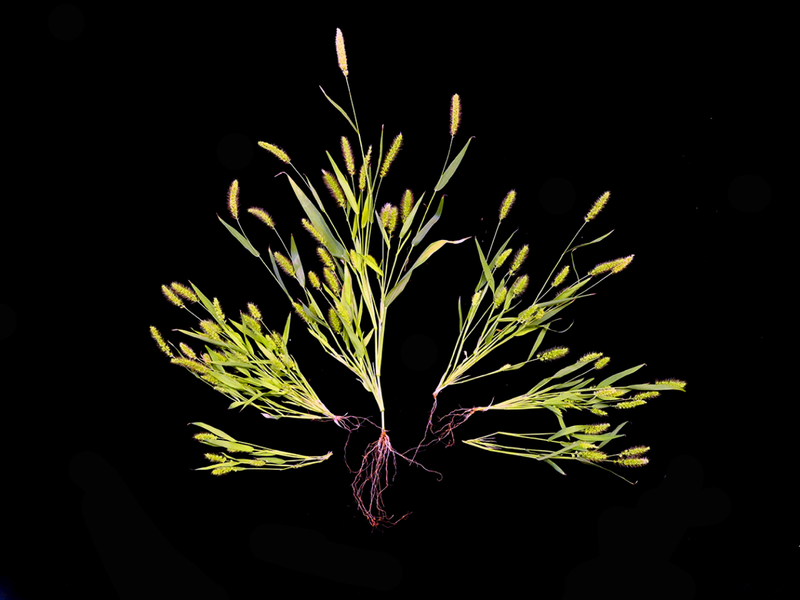Grass architecture
Margarita Mauro-Herrera, John Hodge, Yisel Carrillo
Plant architecture is a 'trait' that continually develops for each plant, responding to both developmental imperatives and environmental influences.
Morphological analyses, including PCA dimension reducing techniques, suggest that there are three different axes of genetic control, being height, primary tiller production, and secondary tiller and axillary branch release. This accords with the genetic data, and suggests a simple way to parse grass architecture. Both sorghum and Setaria mapping populations appear to follow this model, but we have yet to test diversity collections.



